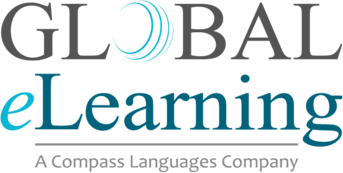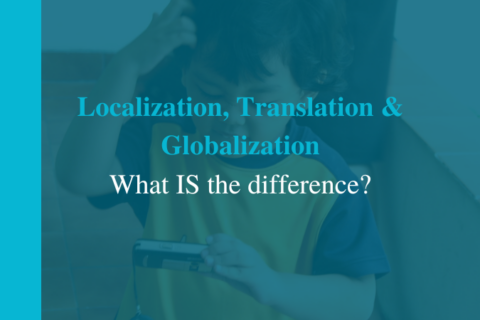Ensuring Your Content is Localized Not Just Translated

Are you struggling with learning and development content that needs to be translated or localized for a geographical and culturally different audience than English? Some language providers (LPs) will translate content; while most language service companies (LSCs) will provide some basic level of localization in their translation work. We define basic localization as the conversion of dates, times, terminology, acronyms, idioms and fonts. These items may be translated, converted and formatted according to the target culture’s norms. But we believe that Authentic Localization™ is a more effective and engaging process that enhances learning and development content. Here are some ways you can ensure your content is localized not just translated.
To engage learners, your content must be visually localized with multi-media. When a language company is asked to “translate” a Storyline, Captivate, or Articulate Rise eLearning module, are they capable of reviewing ALL of the content – video, illustrations, photos, interactions, and voice – to assure you that the totality of the content has been localized for the target culture? Does your LSC or LP even provide such services? If not, then you should seek out a company who specifically provides localization services, and better yet, one that focuses on learning and development content.
Short video clips or still photos are extremely useful for engaging an audience and motivating them to accomplish something big, but do they translate and inspire from one culture to another? For example, let’s say your original training content included a photo of Hank Aaron hitting one of his signature home runs – with material that is used to suggest “hitting it out of the park!” Could this training content simply be translated into Chinese? Would there be the same relevance to baseball or Hank Aaron in Chinese culture? Not likely. Although you can translate the words, the image and relation to the content would not convey the proper meaning. In this case, a good LSC will recommend a new image, and potentially new content, to convey the original message intended, in a localized way that the target audience can relate to and understand.
Another example is voice talent. To simply contract the most affordable and/or available voice talent for an Arabic voiceover project is not Authentic Localization™. If the topic is leadership training, and the target audience is predominantly businessmen from Saudi Arabia, it would be ineffective, and possibly unacceptable, to use a female Arabic voice artist for the recording. The cultural anomaly would cause the audience to cease any interest in the training module.
These two brief examples clearly demonstrate why it is important for learning and development content to be Localized, not Just Translated. To ensure that your content is effectively localized, we provide the following tasks that should be included in a Statement of Work for Localization:
- Review all photos, illustrations, and videos with an in-country native speaker
- Recommend substitutions of any visual content that would offend or confuse the target audience
- Review all on-screen text for potential issues in translation – emotional responses, humor, idioms
- Carefully select the appropriate gender and tone of the voice actor
- Provide directorial guidance to the voice actor to capture appropriate tone and energy expected by the target audience in order to accomplish engagement.
It is important to note that these are not time-consuming or expensive requirements to execute. Yet, they are critical to ensuring your content has a high level of comprehension and engagement.
When is it appropriate to localize content versus simply translating it? What are the guidelines that you can use to ensure your content is localized vs simply being translated? Global eLearning is an industry leader in localization best practices for learning and development content. We have developed resources to enhance your localization initiatives. Download our free ebook “Creating an Impactful eLearning Localization Strategy” or contact us for a free consultation!



